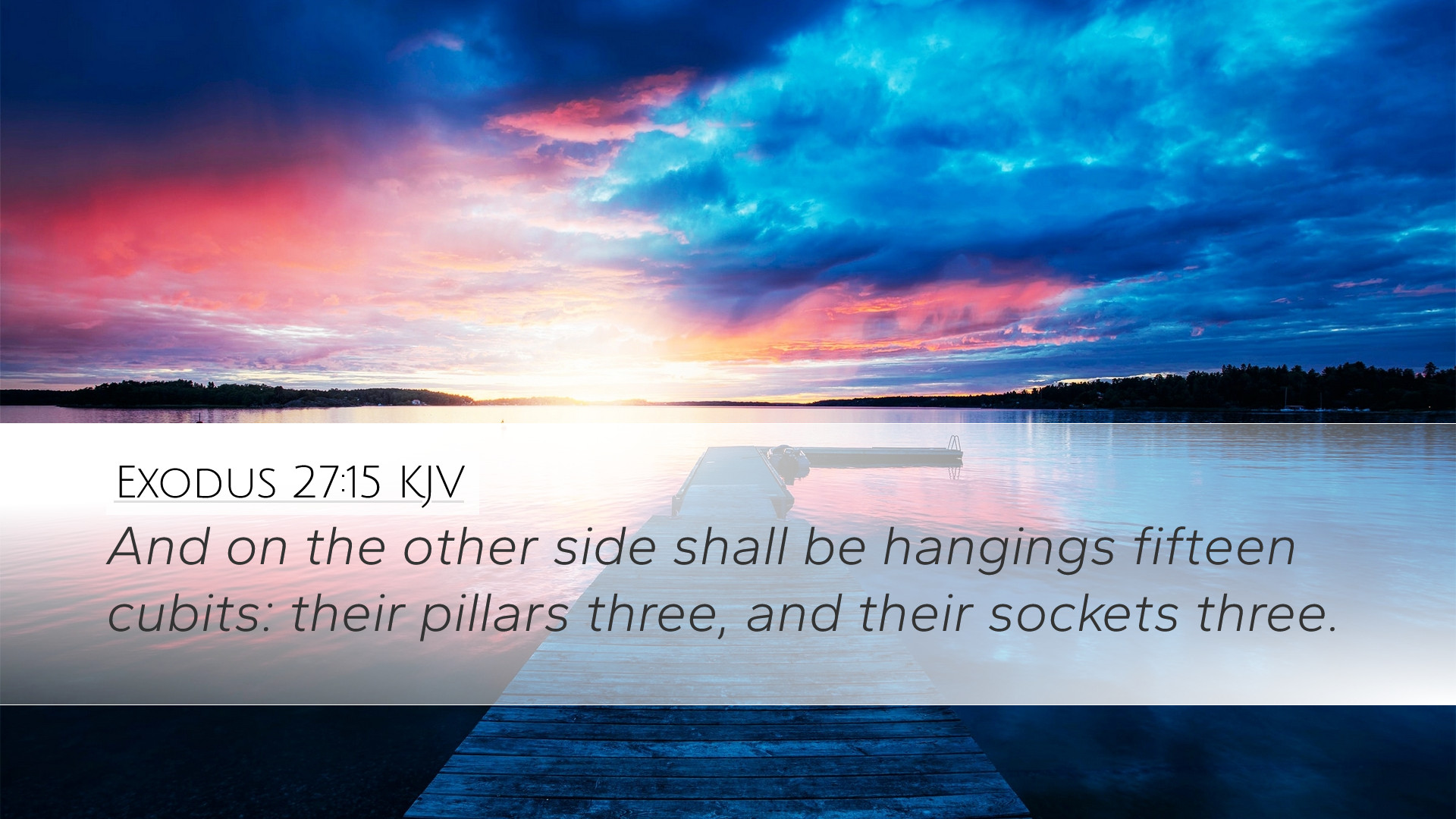Commentary on Exodus 27:15
Text of Exodus 27:15 (KJV): "And the hangings of the court shall be of fine twined linen of an hundred cubits long for one side: and the twenty pillars thereof and their sockets shall be of brass; and the hooks of the pillars and their fillets shall be of silver."
Introduction
This verse is part of God’s instructions to Moses regarding the construction of the tabernacle and its surroundings. It highlights the importance of specific materials and measurements, which serve not only to create a sacred space but also to communicate profound spiritual truths.
Exegesis and Commentary
Significance of the Court
Matthew Henry emphasizes the role of the outer court of the tabernacle. He notes that this space was essential for the ministry of priests and for the people of Israel as they came to worship. The hangings of fine twined linen represent purity and holiness, setting apart this area for reverent interaction with God.
Materials and Their Symbolism
- Fine Twined Linen: Albert Barnes points out that the use of fine linen signifies the beauty and holiness required in approaching God. The fine linen symbolizes righteousness, as seen in Revelation 19:8, where the righteous acts of the saints are depicted as fine linen.
- Brass Sockets: Adam Clarke reflects on the significance of brass, commonly associated with judgment and strength. The robust brass sockets symbolize stability and the enduring nature of God's presence, serving as a reminder that God’s righteousness must be upheld.
- Silver Hooks and Fillets: Henry observes that silver often represents redemption and grace. The hooks of silver suggest that while we are called to be holy, we are also needed to maintain a connection and support for our faith, underscoring the redemptive work of Christ.
Measurements and Proportions
The specific dimensions mentioned in this verse, such as "an hundred cubits long," convey the completeness and orderliness associated with God's commands. Clarke interprets the precise specifications as reflective of God's attention to detail, which should inspire pastors and theologians to acknowledge the importance of following divine directives in ministry and worship.
Application for Contemporary Worship
This verse offers rich insights for modern worship practices. Barnes notes that while the physical tabernacle is no longer needed, the principles of holiness, reverence, and the careful construction of our “courts” of worship remain vital. Just as the ancient Israelites constructed a sacred space to meet God, contemporary believers are called to create an atmosphere conducive to divine interaction.
Conclusion
Exodus 27:15 serves as a reminder of the sacred nature of worship and the care with which we should approach God. Through the commentary of Henry, Barnes, and Clarke, we glean not only the historical and cultural context of the text but also its timeless applications in our lives as followers of Christ. The meticulous design of the tabernacle inspires us to reflect on our worship settings, encouraging leaders to foster environments that honor God's holiness while making room for His grace.


